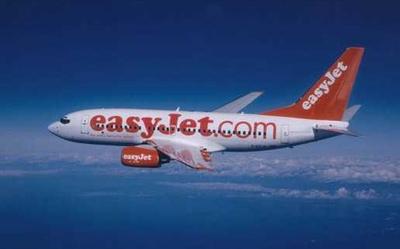Wed, Jun 09, 2010
Ash Detector Could End Large-Scale Disruption Due To Volcanic
Eruptions
The British carrier easyJet is set to become the first airline
to test a new technology called AVOID (Airborne Volcanic Object
Identifier and Detector). The system places infrared technology
onto an aircraft to supply images to both the pilots and an
airline’s flight control center ... essentially a weather
radar for volcanic ash. It was created by Dr Fred Prata of the
Norwegian Institute for Air Research (NILU).

The images will enable pilots to see an ash cloud up to 100 km,
or about 62 miles, ahead of the aircraft and at altitudes between
5,000ft and 50,000ft. This will allow pilots to make adjustments to
the plane’s flight path to avoid any ash cloud. On the
ground, information from aircraft with AVOID technology would be
used to build an accurate image of the volcanic ash cloud using
real time data. This would open up large areas of airspace that
would otherwise be closed during a volcanic eruption, which would
benefit passengers by minimizing disruption.
“This pioneering technology is the silver bullet that will
make large-scale ash disruption history," said easyJet Chief
Executive Andy Harrison. "The ash detector will enable our aircraft
to see and avoid the ash cloud, just like airborne weather radars
and weather maps make thunderstorms visible.”
 “AVOID enhances the theory around volcanic ash clouds
with live data. easyJet is committed to bring our technology to
life,” added Dr Fred Prata, Senior Scientist at the Norwegian
Institute for Air Research (NILU) and inventor of the AVOID
system.
“AVOID enhances the theory around volcanic ash clouds
with live data. easyJet is committed to bring our technology to
life,” added Dr Fred Prata, Senior Scientist at the Norwegian
Institute for Air Research (NILU) and inventor of the AVOID
system.
Andrew Haines, Chief Executive of the Civil Aviation Authority
said it is essential that the aviation community works together to
develop solutions to minimize disruption, should ash return. "The
CAA welcomes the fact that airlines are considering innovations
such as this and we will do all we can to facilitate them,”
Haines said
The first test flight is to be carried out by Airbus on behalf
of easyJet within two months, using an Airbus 340 test aircraft.
Subject to the results of these tests, easyJet intends to trial the
technology on its own aircraft with an eye towards installing it on
enough aircraft to minimize future disruption from ash.
More News
Aviation Governance Secured...At Least For a While The National Business Aviation Association similarly applauded the passage of the FAA's recent reauthorization, contentedly recou>[...]
Emphasis On Growing The Future of Aviation Through Concentration on 'AFFORDABLE FLYERS' It's been a number of years since the Latest Edition of Jim Campbell's HUGE SportPlane Resou>[...]
Amazilia Aerospace GmbH, Develops Digital Flight Control, Flight Guidance And Vehicle Management Systems Textron eAviation has acquired substantially all the assets of Amazilia Aer>[...]
Honeywell's Primus Brings New Tools and Niceties for Hawker Operators Hawker 4000 business jet operators have a new installation on the table, now that the FAA has granted an STC f>[...]
Company Celebrates Niche-but-Important Advancement in Industry Standards Echodyne has announced full integration of its proprietary 'EchoFlight' radar into the e American Aerospace>[...]
 Bolen Gives Congress a Rare Thumbs-Up
Bolen Gives Congress a Rare Thumbs-Up The SportPlane Resource Guide RETURNS!!!!
The SportPlane Resource Guide RETURNS!!!! Buying Sprees Continue: Textron eAviation Takes On Amazilia Aerospace
Buying Sprees Continue: Textron eAviation Takes On Amazilia Aerospace Hawker 4000 Bizjets Gain Nav System, Data Link STC
Hawker 4000 Bizjets Gain Nav System, Data Link STC Echodyne Gets BVLOS Waiver for AiRanger Aircraft
Echodyne Gets BVLOS Waiver for AiRanger Aircraft




